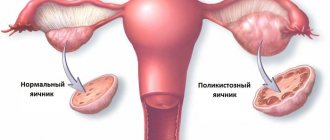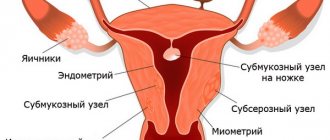Hygienic tampons are a modern and very convenient means of hygiene during menstruation.
Unlike pads, they are not felt inside the body and are not noticeable from the outside, no matter what tight clothes you wear. With them you can play sports, sunbathe on the beach, dance and generally lead a normal lifestyle.
Many people are afraid to use tampons due to fear. They think the tampon may get stuck inside or be difficult to remove. Could this happen? And what to do if a tampon gets stuck?
Can a tampon stay inside a woman?
In very rare cases, a tampon may slip out. Only if it becomes heavily saturated with secretions and becomes very slippery. This usually happens while going to the toilet.
But if your periods are not too heavy or are already ending, then this is unlikely to happen.
In any case, the tampon is located within the vagina, the length of which is only 10 - 13 cm. The tampon cannot penetrate from it into the body - this is completely excluded.
All kinds of “scaremongers” that a tampon can penetrate the uterus are completely unfounded. The opening of the cervix is the size of a match head. It opens wider only during childbirth and in no other case. And within a week or two after giving birth it returns to its previous size.
https://youtu.be/ACOPFQ9RyS4
Can a tampon get into the uterine cavity?
To put it bluntly, it is almost impossible.
The fact is that the length of the vagina is on average 11-13 cm. The tampon does not go very deep into the uterus, given that the cervical canal expands during menstruation, but not so wide. Therefore, if a girl wears such products, then she should not worry about the hygiene product getting lost deep in the uterus. However, there are special moments when problems may still arise. In these cases, the hygiene product may get stuck in the vagina. Below are a few such cases.
- Manufacturers strictly monitor safety measures. But if a girl complains that she cannot take it out, it means that she did not follow all the instructions. In rare cases, manufacturers are to blame for saving on raw materials or producing defective products.
- If a girl experiences pain when inserting or wearing a tampon, most likely she chose the wrong size of the sanitary product, or takes it out unfilled.
- This hygiene product can get lost in the vagina if the girl forgot about it (and there were such cases) and decided to insert another one. Thus, the first tampon will be lost and the thread will not be accessible for removal.
- There is another commonplace reason for a stuck tampon. The woman simply forgot to take it out, and it began to decompose there. In this case, it is difficult for the girl to remove it herself and she must go to the doctor.
Main causes of jams
- You simply forgot to remove the last used tampon at the end of your period
- You chose the wrong tampon size, which means the tampon is not completely saturated, it is dry and becomes more difficult to remove
- You inserted a new tampon, forgetting to take out the previous one, and thus pushing it deeper with the second tampon
- You forgot about the tampon and had sex without removing it. In this case, the tampon may also be “packed” deep into the vagina
- You accidentally pushed the string and the tampon inside and you can’t feel it from the outside
- The tampons turned out to be of poor quality and the thread came off
In all these cases, there is absolutely nothing to panic about. If a tampon is stuck inside, you just need to know how to get it out. This is not a problem and will only take a couple of minutes.
When problems might arise
Difficulties associated with using tampons arise when a girl does not follow the instructions for their use. Discomfort also appears:
- when choosing the wrong personal hygiene products;
- their untimely change of tampon;
- having sexual intercourse with a tampon inserted inside.
In rare cases, problems with use may occur when purchasing low-quality products. This applies to situations where the manufacturer did not securely fasten the thread, and it broke when removing the tampon from the vagina.
It hurts to take the product out
If a woman has chosen the wrong type of product, that is, has not taken into account the characteristic features of her menstrual cycle, when removing it, pain may occur when removing the tampon. Unpleasant sensations arise from friction between the material from which the object is made and the vaginal walls. Due to the discomfort that appears, it seems that the tampon may get stuck in the vagina, but this is not the case.
Even in the absence of pain, the hygiene product should be removed at the end of the recommended period of use, since long-term use of one product threatens the appearance of gynecological problems, for example, disruption of the vaginal microflora.
To do this you will have to apply a little more force than usual. If the thread breaks and the absorbent part remains inside, it should be removed using the method of tension of the vaginal muscles.
Pain can also occur if a woman tries to remove a stuck object ahead of time. This occurs because the product is not saturated with menstrual fluid and remains dry, causing friction.
To ensure that the hygiene item does not get stuck in the vagina, and that the woman does not have difficulty removing it, it is necessary to select tampons correctly. To do this, you need to pay attention to the absorbent characteristics displayed on the packaging in the form of drops.
The woman forgot to remove the tampon before inserting the next one.
There are situations when a woman forgot to remove the inserted tampon and uses another one. This threatens that the thread from the remaining hygiene item can completely penetrate the vagina. At best, there will be problems with removing the product, and at worst, the second absorbent part may remain inside the woman if she completely forgot about it and removed only one item.
How to get a tampon without thread
First of all, squat down or on the toilet and try to just push.
It is quite possible that this action will cause the tampon to slip out or at least appear on the outside. Then you can carefully pick it up and pull it out. There is no need to push very hard or for a long time.
With a rope
If the tampon is stuck inside and you do not feel it move, it means that it is too dry and you need to remove it with your hands.
- Wash your hands well with soap. If this is not possible, treat with antibacterial wipes or gel. It’s good if you have chlorhexidine or miramistin on hand. You can wipe your hands with these antiseptics.
- Next, try to feel the thread by carefully inserting your finger into the vagina. She might be very close. Just don't push the tampon in any deeper.
Without rope
If the tampon is stuck without a string or it is difficult to feel, then try to pull it out yourself:
- Gently insert your finger into the vagina and explore the walls with your finger.
- Once you find the tampon, place your finger behind it and push it towards the exit. Just as if you were taking a berry out of a bottle with a narrow neck.
- If the vagina is too dry, it may be difficult to remove a tampon; in this case, you can lubricate your fingers with a special intimate lubricant (lubricant) or sea buckthorn oil.
Be careful with long nails. It is better to cut them off or consult a doctor to remove the tampon. The main thing is not to put your fingers with long sharp nails inside the vagina. The mucous membrane is easy to scratch, especially since there are not many nerve endings deep in the vagina, and you may not feel that you have caught the delicate wall with your fingernail.
If you still cannot cope and do not know how to remove the tampon, consult a doctor within 24 hours. Don't be shy. The gynecologist will not be at all surprised if you say: “I can’t pull out the tampon.” It will solve the problem in a few seconds, and it doesn't hurt at all.
How to play it safe
- Maintain strict hygiene during menstruation. Change tampons every 4 to 8 hours, not forgetting about this procedure. Over time, this habit will become automatic and situations in which you might forget about the tampon simply will not arise.
- Never insert the string after the tampon into the vagina. Some girls worry that the thread will be noticed by someone. For example, peeking out from under a swimsuit on the beach. But it’s not worth it to then look for a tampon in the vagina, perhaps with dirty hands in the conditions of the same beach. Remember, you run the risk of infection. The thread can be placed along the labia, stretching it to its full length.
- Use high-quality tampons, such as Ob, Tampax, Cotex. With good tampons, it is extremely difficult to tear off the thread; it is stitched along the entire length of the tampon. In addition, usually the surface of such tampons is specially treated so that they slide easily.
- Before insertion, straighten the string along its entire length and check its strength by holding the tampon in one hand and pulling the string with the other.
- Insert the tampon correctly, at an angle of approximately 45 degrees and as deep as possible. That is, if you insert a tampon without an applicator, using your finger, then your finger should go completely into the vagina. A correctly inserted tampon is absolutely not felt and does not cause any discomfort. Some people are afraid to insert a tampon deeply for fear of not being able to remove it later. But here it’s the other way around: a tampon not inserted deeply enough is located inside the vagina in the wrong position, can interfere with movements, become deformed, fold, or unfold horizontally, which can then interfere with its removal.
- Never use tampons when you are not on your period. For example, when you are just expecting them. Not only is this unhygienic, but it can also make it difficult to remove the tampon.
- Do not use a tampon longer than expected, even if it is not yet saturated. It is impossible for secretions, which are a favorable environment for microbes, to remain inside the body for such a long time.
Also select tampons with the desired degree of absorbency. They differ in the number of droplets and names:
- “Mini” or “lites” for minimal highlighting. They are used in the first or last days of menstruation or if only a little blood is released.
- "Normal" or "regular" is used by most women throughout their periods
- “Super” - for heavy discharge, for example, on the day when your period is especially heavy
- “Super plus” - for those cases when “super” is not enough, with very heavy periods.
If you are just starting to use tampons, start with the smallest or “normal” tampons, using a pad for protection the first time.
In the future, you will determine how long it takes for the tampon to be completely saturated with secretions. This time should be between 4 and 6 hours. If you have to change a tampon earlier than after 4 hours, you need to take larger tampons. And if after 4 hours the tampon is completely dry, you need tampons with less absorbency.
Choosing the right tampons is important both for hygiene reasons and because a dry tampon is much more difficult to obtain and can be accompanied by discomfort.
Difficulty with tampons
The first thing that can lead to a tampon getting stuck in the vagina is a break in the lace (thread), which must be pulled to remove the sanitary product. Although this situation happens very rarely. To avoid thread breakage after inserting a tampon into the vagina, it is necessary to check the condition of the thread before insertion. If the product is of poor quality, the lace will easily come off.
It is not uncommon for the tampon thread to be “lost.” Very often it penetrates the vagina or sticks to the labia. In this case, you need to squat down and use thoroughly washed fingers to find the thread. And then remove the hygiene product.
Sometimes women, out of forgetfulness, insert the next tampon without removing the previous one. Naturally, the first tampon penetrates deep into the vagina, and the return thread is lost, as it is crushed and pushed through by the next tampon.
In addition, there are known cases of having sex with a sanitary product not removed. During sexual intercourse, a hygiene product is pushed deep into the vagina.
All representatives of the fair sex need to know that sometimes a tampon can jump out of the vagina on its own. This situation occurs during urination or defecation. If the return thread cannot be detected, and when palpating the vagina, no hygiene product is detected, then it is likely that the tampon has “popped out”. To reassure yourself, you need to visit a gynecologist.
If you use the product according to the instructions, namely, change the hygiene product every 3-4 hours, then no problems will arise. However, women's forums are full of messages from girls who forgot about the hygiene product and could not get it out for a very long time.
What are the dangers of such a situation? Do not forget that warm blood is an excellent breeding ground for pathogenic bacteria, including staphylococci and yeast-like fungi. Consequently, due to the long stay of the tampon in the vagina, there is a possibility of developing vaginitis of various etiologies.
What happens if you don't pull it out in time?
If you take out the tampon within 6-8 hours after insertion, this will not have any unpleasant consequences.
In a situation in which the tampon has remained inside the body for a long time, you may need to consult a doctor and smear the flora. This can happen if you forgot about it and discovered it only by the unpleasant smell that appeared.
The smell appears due to putrefactive processes. They occur in a tampon that decomposes inside the body. Such processes can seriously disrupt the balance of vaginal microflora. This situation is especially dangerous if you already have some problems: colpitis, bacterial vaginosis, candidiasis. Therefore, in these cases, the use of tampons is not recommended at all.
What do the doctor's say
Most doctors have nothing against tampons. Even virginity does not prevent you from using tampons. Contrary to popular fears, the hymen cannot be accidentally damaged by a tampon. But there are a number of situations in which the use of tampons is unacceptable, according to doctors:
- diseases of the genitourinary system. For any infection, you need to start treatment as soon as possible, and during this time replace tampons with pads
- time after childbirth. The first 2 weeks after birth, the use of tampons is completely excluded. In the future, one-time use of tampons is possible, but it is worth remembering that for approximately three months after childbirth, women are at risk for developing toxic shock syndrome (TSS). This is a staphylococcal or streptococcal infection, which in extremely rare cases develops due to the use of tampons.
And of course, any doctor will advise you not to use tampons if you regularly forget to change it and leave it inside for more than 6-8 hours. In this situation, tampons turn from a convenient and safe hygiene product into a potential source of infections and diseases of the genitourinary area.
Subject to basic hygiene, the use of tampons will add a significant amount of comfort during menstruation. Fears are not a reason to deprive yourself of comfort. If a tampon is stuck inside, simply remove it using our instructions. You will see that it is not difficult at all. But if for some reason you cannot or are afraid to do it yourself, do not wait, consult a doctor.
When might problems arise?
Advances in the modern production of feminine hygiene products ensure their safe use during menstrual periods. But if a woman complains that she cannot remove the tampon or that it could remain with a string in the vagina, then this is the fault of the girl who did not take into account all the rules for using a hygiene product. Of course, in rare cases, manufacturers are to blame for not securing the thread securely or skimping on materials.
Read about the dangers of tampons for women's health.
Problems with tampons occur when:
It is painful for a woman to remove the product
Either the product did not have time to soak completely, or the woman chose the wrong product with a higher ability to absorb menstrual flow than necessary. Naturally, you cannot leave a tampon in the vagina for a long time, since in addition to unpleasant sensations, gynecological problems may arise.
The lady forgot to take out the tampon before inserting the next one
Often women simply forget to take out a hygiene product before the next procedure or introduce two at once to avoid leakage (see photo). Doing this is strictly prohibited, because there is a high probability that the rope will completely get into the vagina.
Women forget about the inserted tampon for several days or even a week
On many forums you can find stories from subscribers about menstruation, where a girl forgot a tampon and now cannot get it. The main symptom is the unpleasant smell of the removed product, reminiscent of rot, because the product begins to decompose. In this case, you should definitely visit a doctor to check the microflora. After all, fibers from the product may still remain inside the vagina after such a long stay, which will provoke inflammatory processes or cause diseases. Read in the article at the link that it is better to choose tampons or pads.










